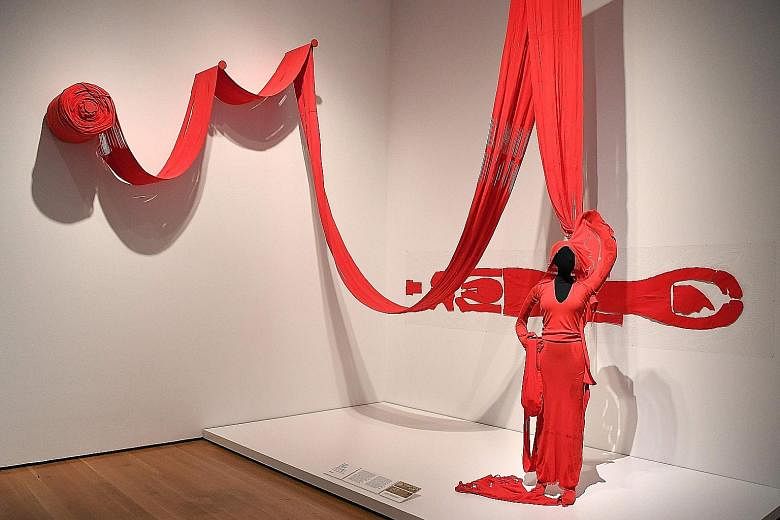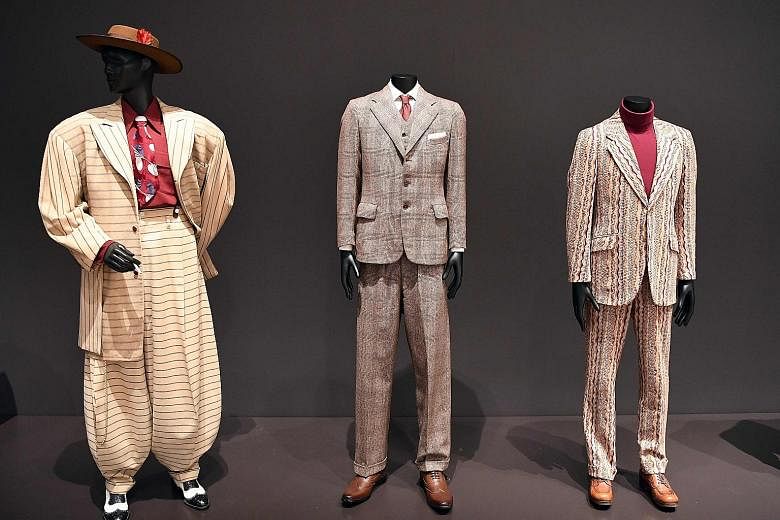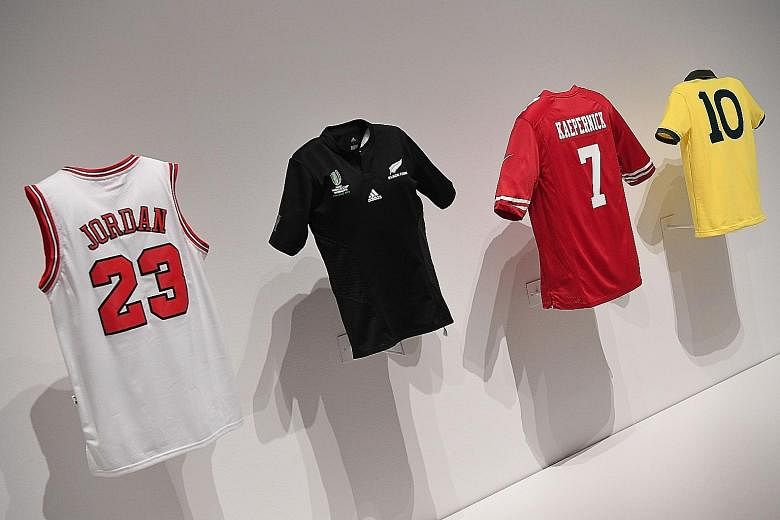NEW YORK • Even a dummy can tell you it is not easy to find mannequins that resemble the actual shape of an American male.
But it was one of the challenges that Ms Paola Antonelli, senior curator of architecture and design at New York's Museum Of Modern Art (MoMA), and her team had to overcome in coming up with an exhibition on fashion.
It opened last Sunday and will run till Jan 28 next year.
It has been more than seven decades since MoMA deigned to confer on fashion anything resembling the status of art.
In 1944, there was an obscure though compelling exhibition in which curator Bernard Rudofsky inquired: Are Clothes Modern?
The question built into the title of that show underscored the perennially dubious position of fashion as an art form and subject worthy of study, and little about that has altered in the ensuing years.
Ms Antonelli readily conceded that when the notion of revisiting the Rudofsky show at MoMA came to her, she was filled with doubt.
"I am embarrassed to admit that at first I felt anxiety about using 'fashion' in the title," she wrote in an introduction to a book accompanying this new show, called Items: Is Fashion Modern?
It contains 111 iconic items of use and adornment chosen by the allfemale curatorial team.
Her decision to add Items to the title was partly a curatorial strategy to de-emotionalise fashion and rehabilitate its discourse by reframing the subject more broadly as a global cultural and political phenomenon.
"You come in and immediately you get a glimpse of a little black dress," said Ms Antonelli, a brisk and no-nonsense New Yorker born and raised in Milan.
In fact, there are several little black dresses, by Arnold Scaasi, Christian Dior and Hubert de Givenchy.
"To the right of the little black dress is a closet and in it, floating like precious objects, are a Wonderbra and a pair of little white briefs," Ms Antonelli said.
"We wanted to focus on the body, how you prepare it, how you project it into the world as a shape and how it is perceived."
Probably as a defence against charges of frivolity and turning an august museum into a dressmaker's shop, the 1944 show looked at fashion largely through the lens of cultural anthropology, viewing women's bodies as shapes that morph over time to accommodate shifting societal norms.
"In the 19th century, the woman has such a big butt, she looks almost like a Minotaur," Ms Antonelli said.
"Yet by the time of the flapper in the 1920s, she has an almost concave figure, very flat-chested. So you go from having a mono-bosom to having no bosom at all."
Objects on view include the hump dresses that Rei Kawakubo designed for a famous - and often misunderstood - 1997 Comme des Garcons collection titled Body Meets Dress, Dress Meets Body.
There are also opulent handwoven brocade saris from the holy city of Varanasi in India, plus a gold 1974 jumpsuit by American designer Stephen Burrows.
Donna Karan's stretchy monochrome Seven Easy Pieces, tunics designed for cosmic voyaging by Pierre Cardin and palazzo pants of a type considered too "radical'' and suggestive for 1960s television vie for attention too.
There is also space for humble rubber Havaianas flip-flops, along with the memorably torturous Armadillo shoes Alexander McQueen created for his spring 2010 Plato's Atlantis collection.
"Those shoes are so disconcerting, they're really instruments of torture," Ms Antonelli said of the footwear from the last full collection he produced before his suicide.
"There were a lot of fascinating and unexpected discoveries for us in making the show," she noted.
While runway fashion, for instance, is generally created for an imaginary ideal woman whose dress size is a two, the average American woman is more typically a size 16.
"We really had to labour to get size 10 mannequins," Ms Antonelli said.
It was no easier locating dummies that echoed the look of a typical American man.
"We kept on having to tell the factory to shave off the muscles: 'Let's go from a six-pack to a four-pack to a two-pack,'" she added.
NYTIMES



